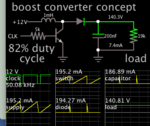bhl777
Full Member level 6
Hi All, I have an application that need to convert 12V DC to a 140V DC, by delivering 1W to the load. I want to pick up a suitable topology for this application, but I can only think of using flyback topology. Would anyone give me some advice if flyback is the most suitable topology? Thank you!
